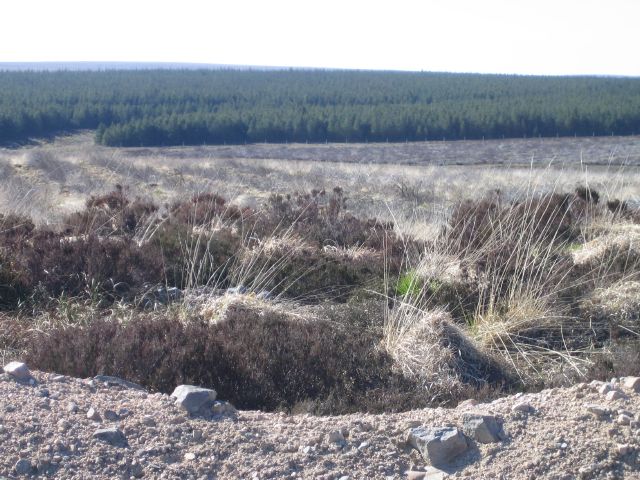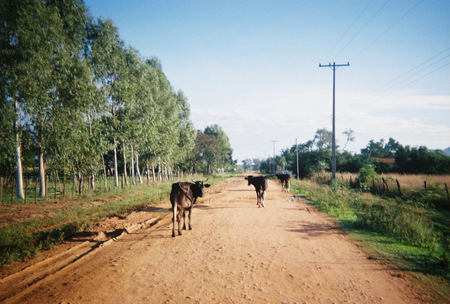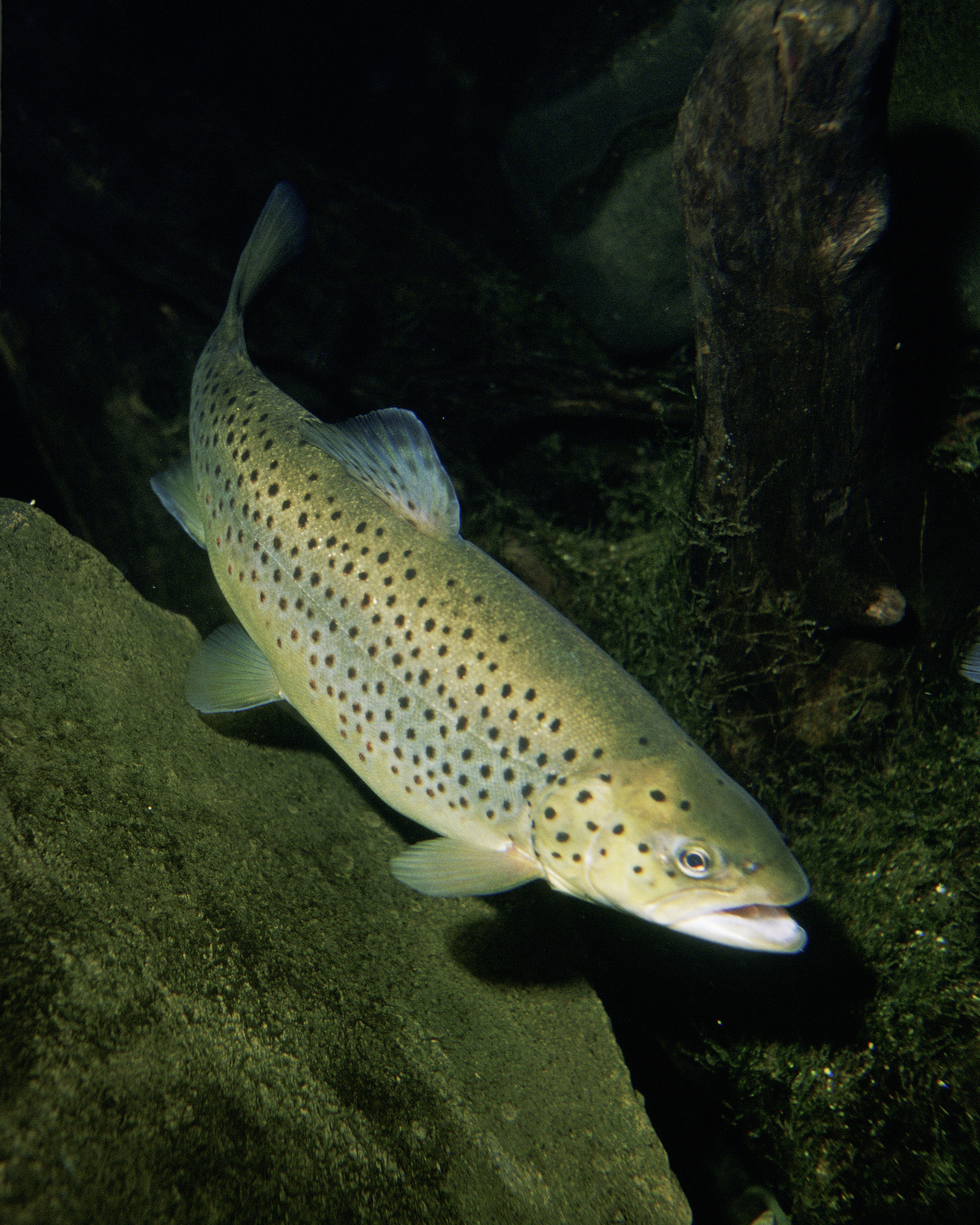|
Altnabreac, Highland
Altnabreac ( , ) is a tiny settlement within the county of Caithness, in the north of Scotland, and now within the Highland council area. The name means "trout stream". It is located on Altnabreac Moss by the Sleach Water in the Flow Country, east of Forsinard and west of Wick. The settlement, notable for its remoteness, consists of Altnabreac railway station and the former Altnabreac School. The school was closed in 1986 and converted into a private residence. The former gamekeeper's house sits adjacent to the school and station. There is a natural spring about from the school. Lochdhu Lodge, approximately south, was built in 1895. During the 1980s peat banks were worked to provide fuel for the residents who regularly used to be cut off from the nearest town of Thurso during the winter. It can only be approached by train by special request to stop at the unstaffed station, or along unsurfaced Forestry Commission roads from the nearest village, Westerdale, about away. ... [...More Info...] [...Related Items...] OR: [Wikipedia] [Google] [Baidu] |
Highland (council Area)
Highland (, ; ) is a council areas of Scotland, council area in the Scottish Highlands and is the largest local government area in both Scotland and the United Kingdom. It was the 7th most populous council area in Scotland at the United Kingdom Census 2011, 2011 census. It has land borders with the council areas of Aberdeenshire, Argyll and Bute, Moray and Perth and Kinross. The wider upland area of the Scottish Highlands after which the council area is named extends beyond the Highland council area into all the neighbouring council areas plus Angus, Scotland, Angus and Stirling (council area), Stirling. The Highland Council is based in Inverness, the area's largest settlement. The area is generally sparsely populated, with much of the inland area being mountainous with numerous lochs. The area includes Ben Nevis, the highest mountain in the British Isles. Most of the area's towns lie close to the eastern coasts. Off the west coast of the mainland the council area includes some ... [...More Info...] [...Related Items...] OR: [Wikipedia] [Google] [Baidu] |
Flow Country
The Flow Country () is a vast area of bog peatland in Caithness and Sutherland, northern Scotland. It is the largest blanket bog in Europe, and covers about . It is an area of deep peat, dotted with bog pools, and is a very important habitat for wildlife. As peat is largely made up of the remains of plants, which are themselves made up of carbon, it locks up large stores of carbon for thousands of years. This carbon would otherwise be released to the atmosphere and contribute to global warming. In 2024 the Flow Country was awarded World Heritage status by UNESCO on account of its unparalleled blanket bog habitat. It includes the Forsinard Flows National Nature Reserve and the Caithness and Sutherland Peatlands. Wildlife The Flow Country is home to a rich variety of wildlife, and is used as a breeding ground for many different species of birds, including greenshank, dunlin, merlin and golden plover. Birds of prey found in the Flow Country include the buzzard and hen harr ... [...More Info...] [...Related Items...] OR: [Wikipedia] [Google] [Baidu] |
Dounreay
Dounreay (; ) is a small settlement and the site of two large nuclear establishments on the north coast of Caithness Caithness (; ; ) is a Shires of Scotland, historic county, registration county and Lieutenancy areas of Scotland, lieutenancy area of Scotland. There are two towns, being Wick, Caithness, Wick, which was the county town, and Thurso. The count ... in the Highland (council area), Highland area of Scotland. It is on the A836 road west of Thurso. The nuclear establishments were created in the 1950s. They were the Nuclear Power Development Establishment (NPDE), now known as NRS Dounreay, for the development of civil fast breeder reactors, and the Vulcan Naval Reactor Test Establishment, Vulcan Naval Reactor Test Establishment (NRTE), a military Nuclear marine propulsion, submarine reactor testing facility. Both these no longer perform their original research functions and will be completely decommissioned. The two establishments have been a major element in the ... [...More Info...] [...Related Items...] OR: [Wikipedia] [Google] [Baidu] |
Westerdale, Highland
Westerdale () is a scattered crofting village which lies on the River Thurso, located directly south of Halkirk, in Caithness, Highland, Scotland. The B870 road passes through the village. The 14th century Dirlot Castle is located south of the village, and was the stronghold of the Sutherlands, Cheynes, Gunns and Mackays M&Co Trading Limited, trading as M&Co.) is a Scottish online retailer and former high street chain store selling women's, men's, and children's clothes, as well as small homeware products. Its head office is in Inchinnan, Scotland, though i ... throughout its history. References Populated places in Caithness {{Caithness-geo-stub ... [...More Info...] [...Related Items...] OR: [Wikipedia] [Google] [Baidu] |
Dirt Road
A dirt road or track is a type of unpaved road not paved with asphalt, concrete, brick, or stone; made from the native material of the land surface through which it passes, known to highway engineers as subgrade material. Terminology Similar terms Terms similar to dirt road are ''dry-weather road'', ''earth road'', or the "Class Four Highway" designation used in China. A ''track'', ''dirt track'', or ''earth track'' would normally be similar but less suitable for larger vehicles—the distinction is not well-defined. Laterite and murram roads, depending on material used, may be dirt roads or improved roads. Improved road Unpaved roads with a harder surface made by the addition of material such as gravel and aggregate (stones), might be referred to as dirt roads in common usage but are distinguished as improved roads by highway engineers. Improved unpaved roads include gravel roads and macadamized roads. Characteristics Compared to a gravel road, a dirt road is ... [...More Info...] [...Related Items...] OR: [Wikipedia] [Google] [Baidu] |
Altnabreac Railway Station
Altnabreac railway station () is a rural railway station in the Highland council area of Scotland. It serves the area of Altnabreac a settlement in which the station itself is the main component in the historic county of Caithness. The name Altnabreac derives from the Scots Gaelic ''Allt nam Breac'', meaning "the stream of the trout". The station is on the Far North Line, from , situated between Forsinard and Scotscalder. The station comprises a single platform capable of accommodating a four-carriage train. The station is managed by ScotRail, who operate all trains serving it. Services were suspended on 12 November 2023 due to an access dispute with a neighbouring property but resumed on 6 April 2025. History The station was opened by the Sutherland and Caithness Railway on 28 July 1874 and later absorbed by the Highland Railway. The reason for the station's construction is a mystery. At the time of construction it was from the nearest settlement and from the neare ... [...More Info...] [...Related Items...] OR: [Wikipedia] [Google] [Baidu] |
Wick, Caithness
Wick ( ; ) is a town and royal burgh in Caithness, in the far north of Scotland. The town straddles the River Wick and extends along both sides of Wick Bay. "Wick Locality" had a population of 6,954 at the time of the United Kingdom Census 2011, 2011 census, a decrease of 3.8% from 2001. Pulteneytown, which was developed on the south side of the river by the British Fisheries Society during the 19th century, was officially merged into the burgh in 1902. Elzy was described as on the coast a couple of miles east of Wick in 1836. The town is on the main road (the A99 road (Great Britain), A99–A9 road (Great Britain), A9 road) linking John o' Groats with southern Great Britain, Britain. The Far North Line, Far North railway line links Wick railway station with southern Scotland and with Thurso, the other burgh of Caithness. Wick Airport is on Wick's northern outskirts and serves as a base for private helicopter flights to offshore wind and oil projects, as well as scheduled comm ... [...More Info...] [...Related Items...] OR: [Wikipedia] [Google] [Baidu] |
Forsinard
Forsinard ( ) is a hamlet in the county of Sutherland in the Highland area of Scotland. It is located on the A897 road in Strath Halladale. It is served by a railway station on the Far North Line. The local hotel closed several years ago, but there is now a B&B just across the level crossing. Forsinard is situated in the Flow Country, an area of peat bog which straddles the borders of Caithness and Sutherland. The Forsinard estate was purchased in 1977 by Basil Baird. The Royal Society for the Protection of Birds (RSPB) runs a nature reserve and a visitor centre at Forsinard. The Forsinard Flows national nature reserve attracts a large range of birds and wildlife. Rail transport Forsinard Railway Station lies on the picturesque Far North Line, located north of Kinbrace and south of Altnabreac. It was opened by the Highland Railway on 28 July 1874. From 1 January 1923 it was owned by the London Midland and Scottish Railway. The station is currently managed by ScotRail ... [...More Info...] [...Related Items...] OR: [Wikipedia] [Google] [Baidu] |
Caithness
Caithness (; ; ) is a Shires of Scotland, historic county, registration county and Lieutenancy areas of Scotland, lieutenancy area of Scotland. There are two towns, being Wick, Caithness, Wick, which was the county town, and Thurso. The county includes the northernmost point of mainland Britain at Dunnet Head, and also the most north-easterly point at Duncansby Head near John o' Groats. The Flow Country is the largest blanket bog in Europe, and covers a large inland area in the west of the county. Caithness has a land boundary with the historic county of Sutherland to the west and is otherwise bounded by sea. The land boundary follows a drainage divide, watershed and is crossed by two roads (the A9 road (Great Britain), A9 and the A836 road, A836) and by one railway (the Far North Line). Across the Pentland Firth, ferries link Caithness with Orkney, and Caithness also has an airport at Wick, Highland, Wick. The Pentland Firth island of Stroma, Scotland, Stroma is within Caithne ... [...More Info...] [...Related Items...] OR: [Wikipedia] [Google] [Baidu] |
Trout
Trout (: trout) is a generic common name for numerous species of carnivorous freshwater ray-finned fishes belonging to the genera '' Oncorhynchus'', ''Salmo'' and ''Salvelinus'', all of which are members of the subfamily Salmoninae in the family Salmonidae. The word ''trout'' is also used for some similar-shaped but non-salmonid fish, such as the spotted seatrout/speckled trout (''Cynoscion nebulosus'', which is actually a croaker). Trout are closely related to salmon and have similar migratory life cycles. Most trout are strictly potamodromous, spending their entire lives exclusively in freshwater lakes, rivers and wetlands and migrating upstream to spawn in the shallow gravel beds of smaller headwater creeks. The hatched fry and juvenile trout, known as ''alevin'' and ''parr'', will stay upstream growing for years before migrating down to larger waterbodies as maturing adults. There are some anadromous species of trout, such as the steelhead (a coastal subs ... [...More Info...] [...Related Items...] OR: [Wikipedia] [Google] [Baidu] |
Council Areas Of Scotland
For local government purposes, Scotland is divided into 32 areas designated as "council areas" (), which are all governed by single-tier authorities designated as "councils". They have the option under the Local Government (Gaelic Names) (Scotland) Act 1997 of being known (but not re-designated) as a "''comhairle''" when opting for a Gaelic name; only ''Comhairle nan Eilean Siar'' (Council of the Western Isles) has chosen this option, whereas the Highland Council (''Comhairle na Gàidhealtachd'') has adopted its Gaelic form alongside its English equivalent, informally. The council areas have been in existence since 1 April 1996, under the provisions of the Local Government etc. (Scotland) Act 1994. Historically, Scotland was divided into 34 counties or shires. Although these no longer have any administrative function, they are still used to some extent in Scotland for cultural and geographical purposes, and some of the current council areas are named after them. There are ... [...More Info...] [...Related Items...] OR: [Wikipedia] [Google] [Baidu] |








